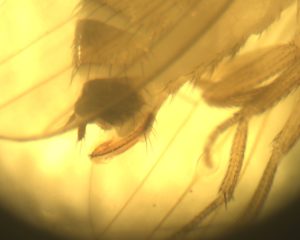Spotted-Wing Drosophila Active in North Carolina Blueberries
go.ncsu.edu/readext?603144
en Español / em Português
El inglés es el idioma de control de esta página. En la medida en que haya algún conflicto entre la traducción al inglés y la traducción, el inglés prevalece.
Al hacer clic en el enlace de traducción se activa un servicio de traducción gratuito para convertir la página al español. Al igual que con cualquier traducción por Internet, la conversión no es sensible al contexto y puede que no traduzca el texto en su significado original. NC State Extension no garantiza la exactitud del texto traducido. Por favor, tenga en cuenta que algunas aplicaciones y/o servicios pueden no funcionar como se espera cuando se traducen.
Português
Inglês é o idioma de controle desta página. Na medida que haja algum conflito entre o texto original em Inglês e a tradução, o Inglês prevalece.
Ao clicar no link de tradução, um serviço gratuito de tradução será ativado para converter a página para o Português. Como em qualquer tradução pela internet, a conversão não é sensivel ao contexto e pode não ocorrer a tradução para o significado orginal. O serviço de Extensão da Carolina do Norte (NC State Extension) não garante a exatidão do texto traduzido. Por favor, observe que algumas funções ou serviços podem não funcionar como esperado após a tradução.
English
English is the controlling language of this page. To the extent there is any conflict between the English text and the translation, English controls.
Clicking on the translation link activates a free translation service to convert the page to Spanish. As with any Internet translation, the conversion is not context-sensitive and may not translate the text to its original meaning. NC State Extension does not guarantee the accuracy of the translated text. Please note that some applications and/or services may not function as expected when translated.
Collapse ▲The first confirmed adult spotted-wing drosophila (SWD) in commercially grown blueberries for the 2019 growing season was captured early this week. While trap captures at this location were low, roughly three flies in 20 traps, this detection indicates that now is the time for blueberry growers to begin more aggressively managing SWD.
How were these flies captured?
The grower who captured these flies used a homemade SWD trap similar to the one described in this video from my colleague Ash Sial at the University of Georgia. Either a homemade yeast, sugar, and water mixture or commercial lures from Scentry Biologicals are the most effective lures to use in these traps. We have compared both these attractants in blueberries and blackberries and see very similar results.
What type of management action should be taken?
Now that adult SWD have been detected in blueberries, efforts should begin to protect ripe and ripening fruit from infestation. Our recommendations are to make weekly application of effective pesticides once ripe fruit are present. Effective materials are listed in the NC Agricultural Chemicals Manual. When comparing pesticides, take note of the preharvest interval (select materials with PHIs of 3 days or less), if materials are acceptable for use on fruit that may be exported (refer to the Global MRL Database), and plan to rotate between at least two different modes of action (IRAC MOA codes) to reduce the pressure on flies to develop resistance.
In addition to pesticides, harvest management and post-harvest storage are also important tools to control SWD. Fruit should be picked as frequently and thoroughly as possible to reduce the time it is exposed to egg laying flies and the time that any eggs that are laid in the fruit have to develop into larvae.
Once fruit is harvested, they should be stored as cold as possible for as long a feasible. We’ve found that temperatures below 36°F essentially stop egg and larvae development and that many eggs and larvae die after 5 days at 36°F or lower.
More information




